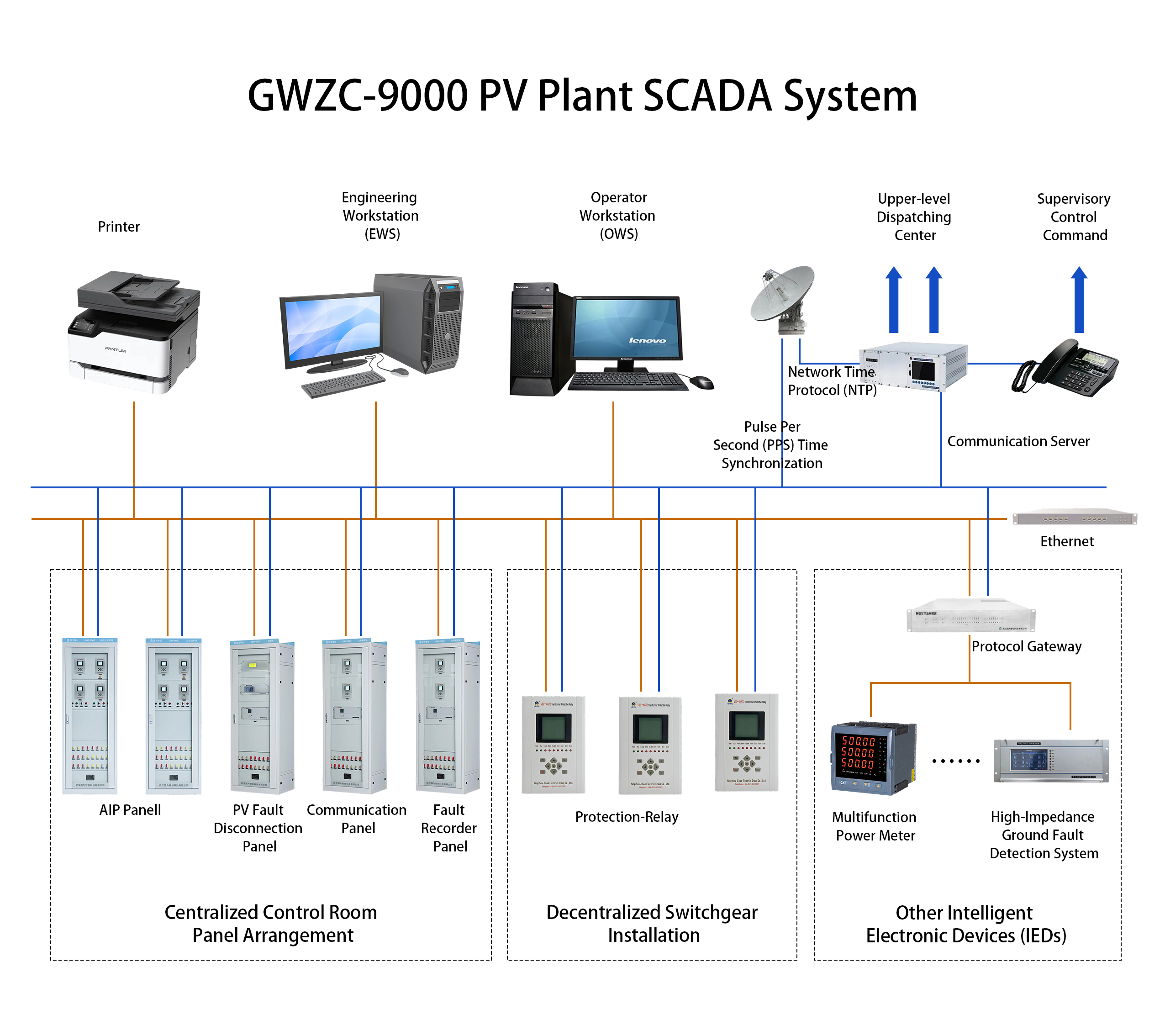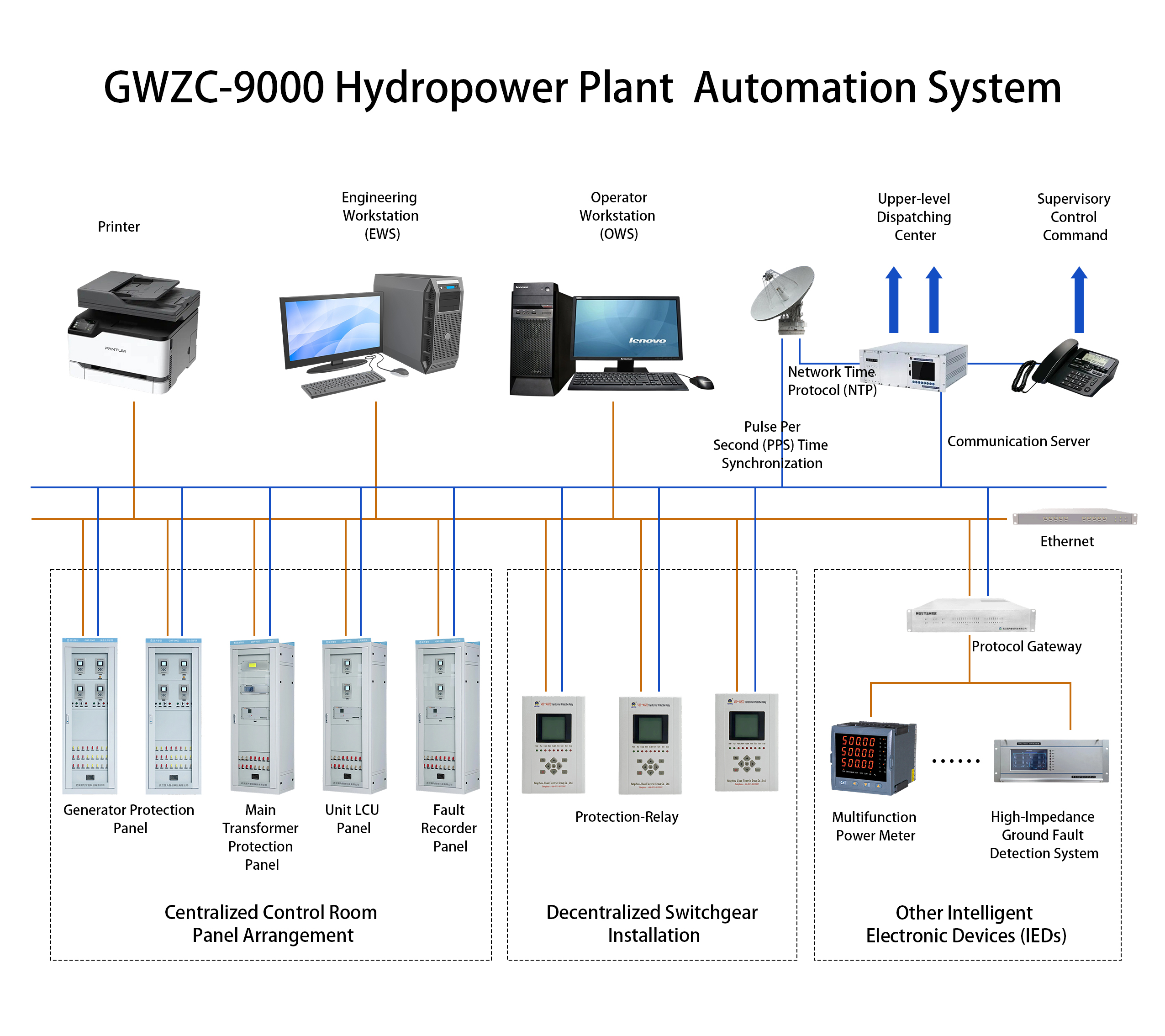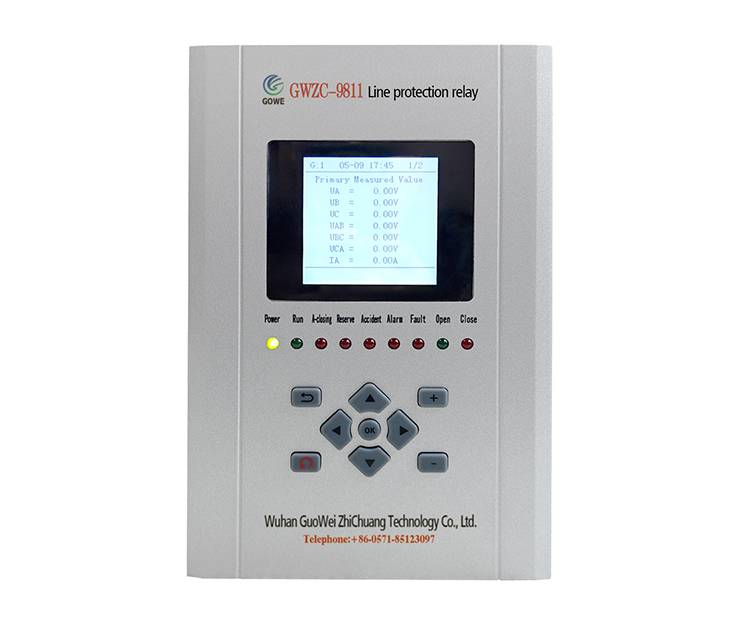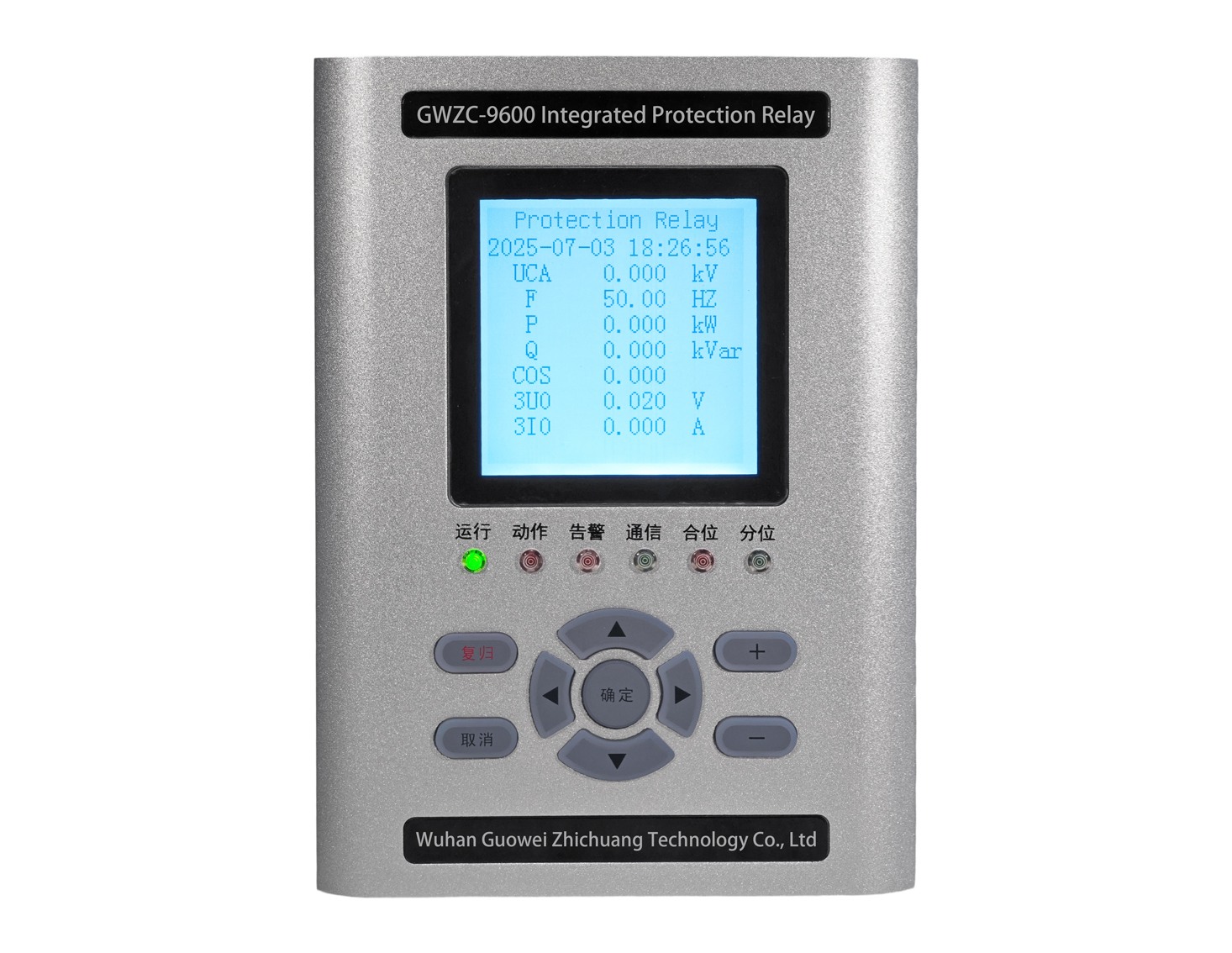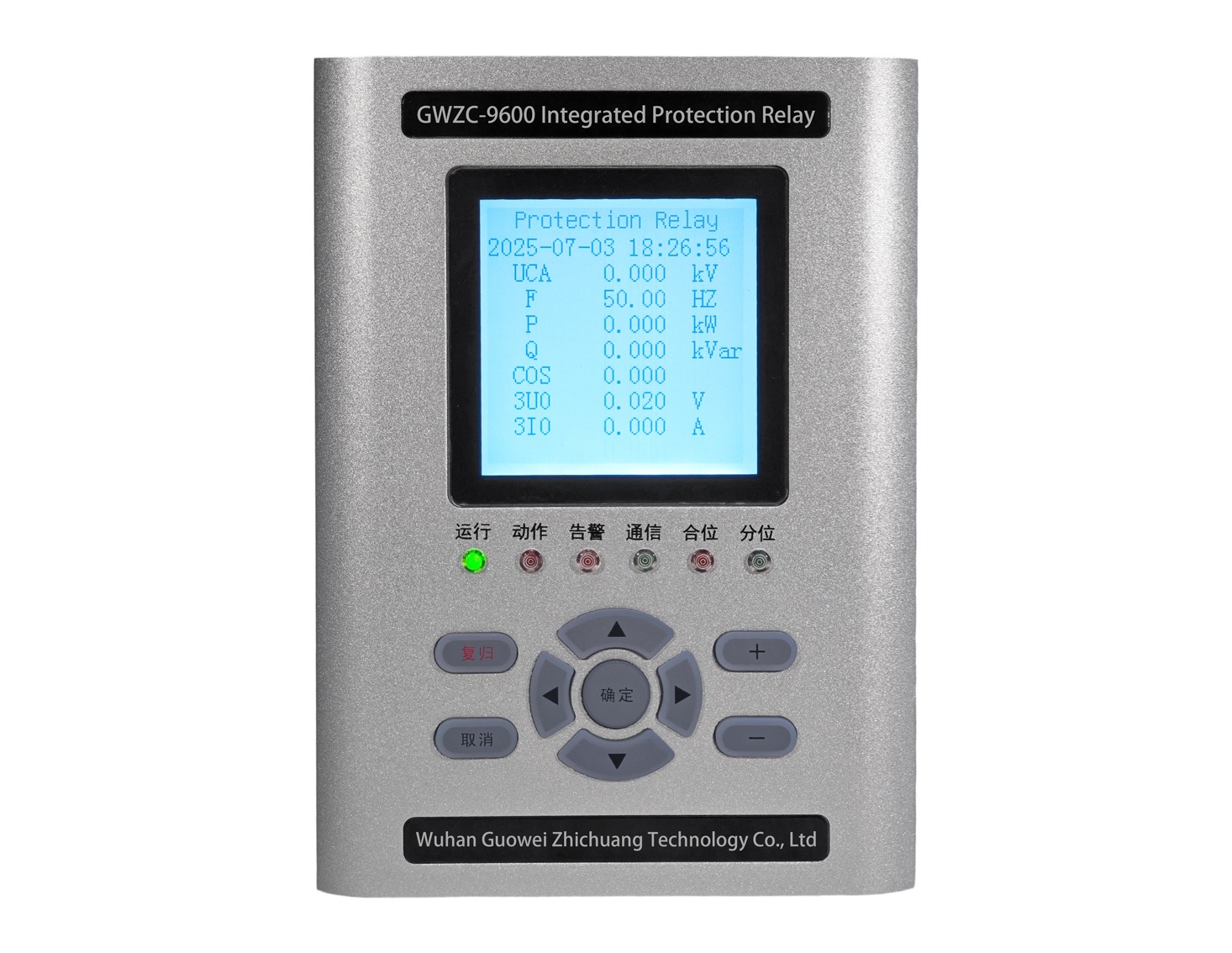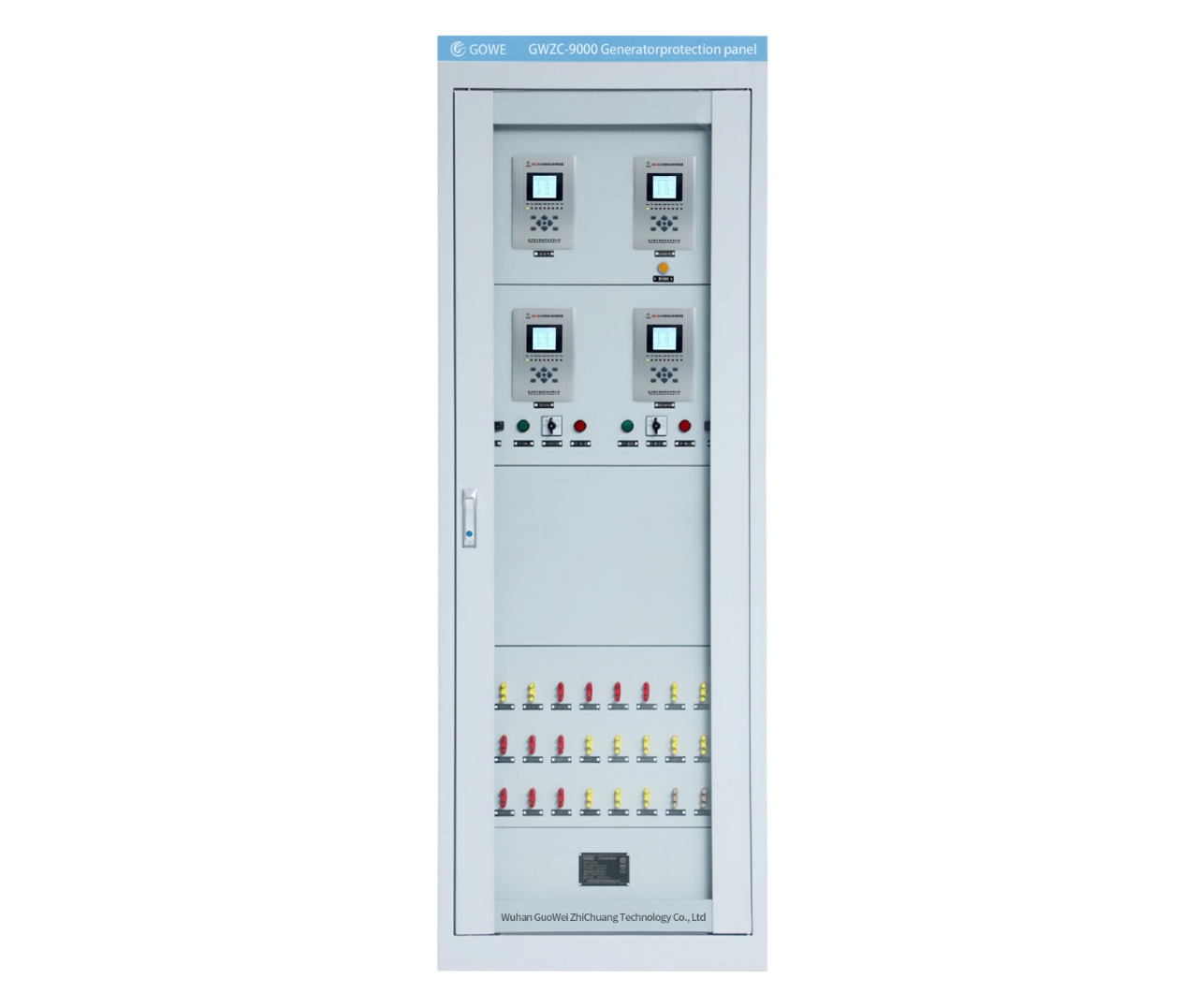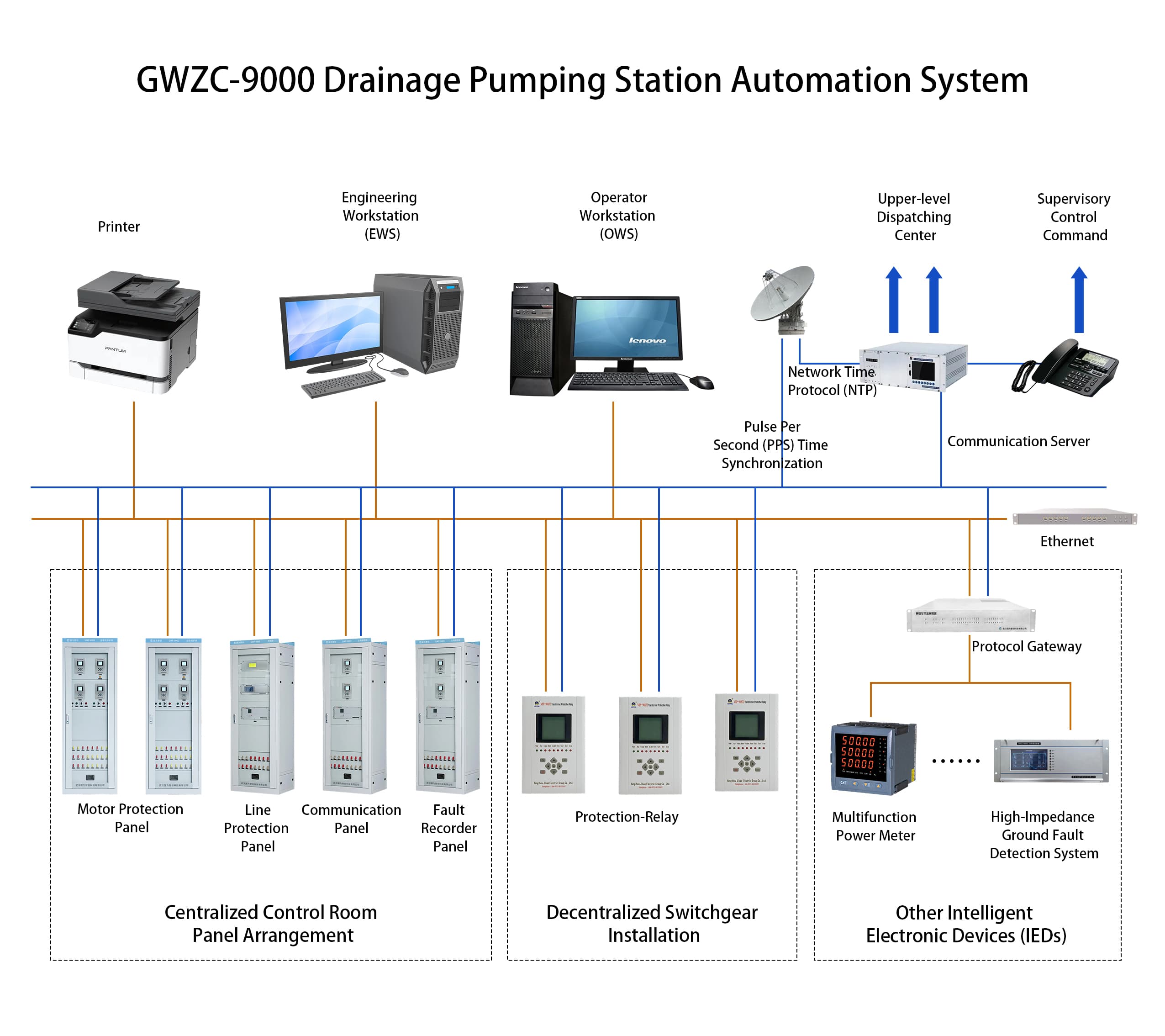

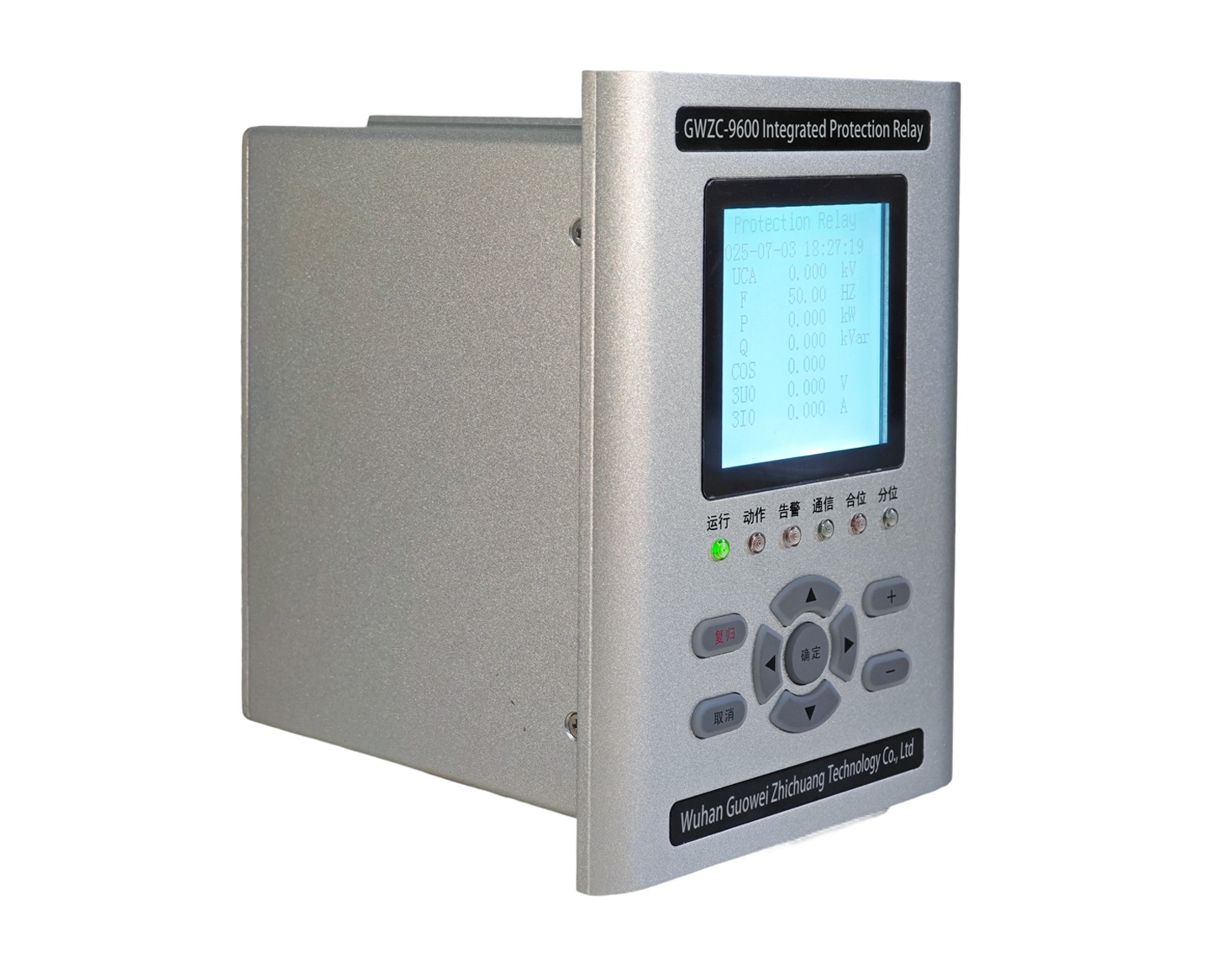
The GWZC-9000 sewage treatment automation control system optimizes the treatment process through intelligent control, protection, and monitoring. It uses smart protection relays, PLCs, and RTUs to automate pump station operations, fault detection, and flow regulation, reducing manual intervention. The SCADA system enables remote monitoring and control, while the IEC 61850 standard ensures seamless communication with municipal systems. Protection relays detect faults (e.g., overcurrent, abnormal water quality) and isolate affected areas to prevent system failures. The system improves reliability, supports predictive maintenance, and optimizes energy management in industrial and municipal sewage treatment networks. Key benefits include reduced downtime, lower operational costs, and enhanced system resilience while complying with safety standards.
Sewage Treatment Automation Control System Description
The GWZC-9000 sewage treatment automation control system is an intelligent control solution designed to improve the efficiency, safety, and reliability of sewage treatment. Widely used in industrial, municipal, and commercial facilities, it minimizes manual intervention in managing treatment processes. By integrating advanced monitoring, protection, and control technologies, it ensures stable treatment performance, reduces downtime, and enhances operational efficiency. Automation enables realtime data analysis, remote operation, and rapid fault response, making it an essential component of modern sewage treatment infrastructure.
Key Functions of the Sewage Treatment Automation Control System
Benefits & Role of the Sewage Treatment Automation Control System
Automation enhances safety by minimizing manual operation risks and boosts reliability by reducing downtime. It improves energy efficiency through optimized flow distribution and lowers costs via remote monitoring. The system supports smart water network integration, enabling demand response and resource optimization. Its role is critical in industries requiring uninterrupted operation, such as chemical plants, food processing, and municipal sewage treatment facilities.
How the Sewage Treatment Automation Control System Works
The system follows a closedloop process of data collection → smart analysis → decision execution → feedback optimization:
Major Components of the Sewage Treatment Automation Control System
This integrated setup ensures a smart, resilient, and futureready sewage treatment network.
